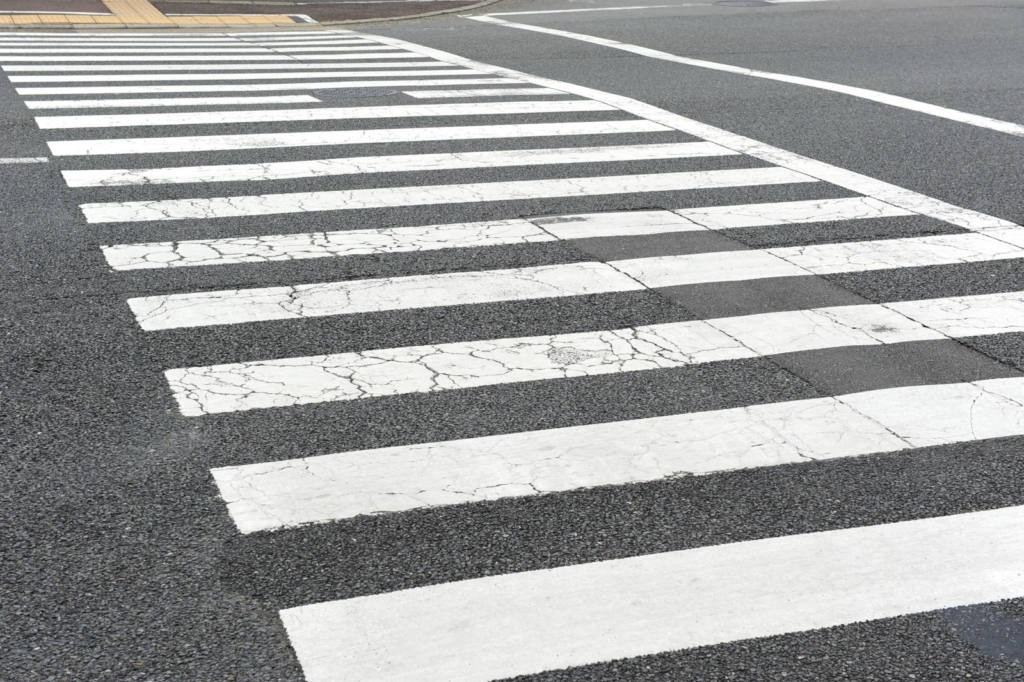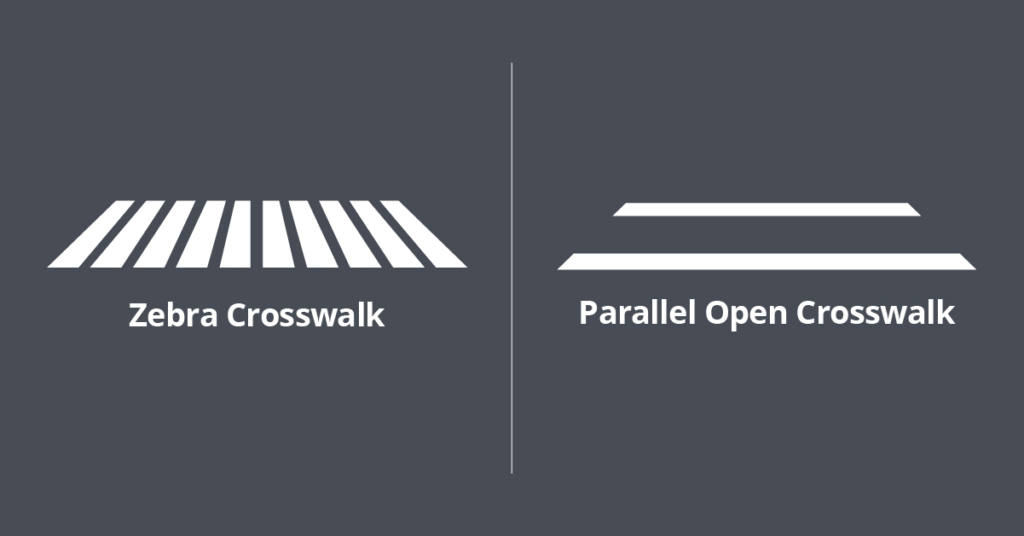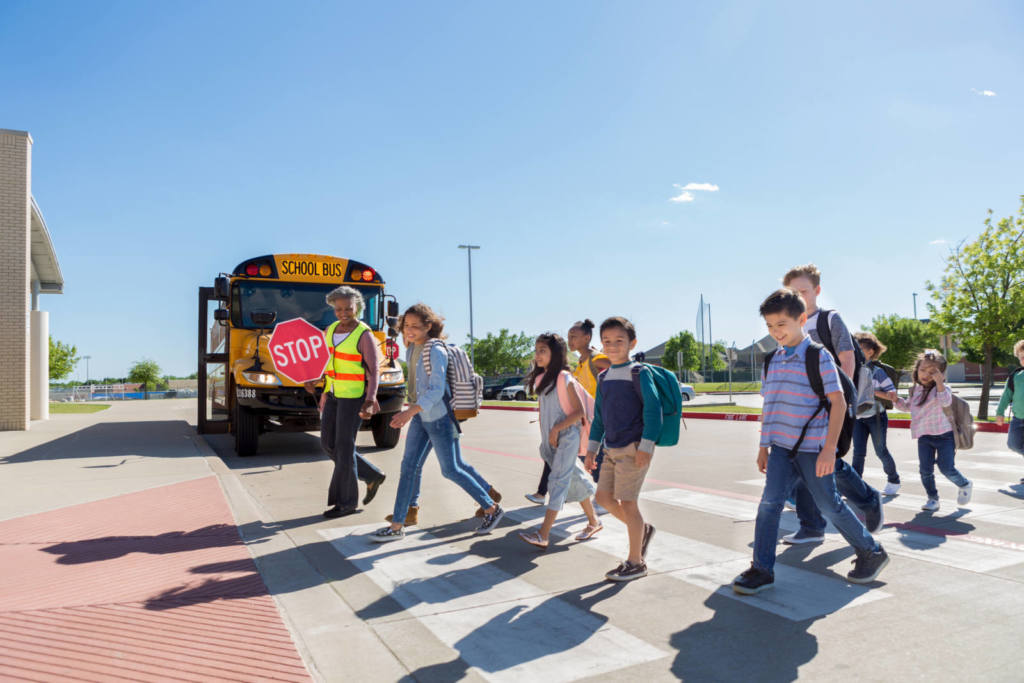You probably don’t think about crosswalks often, maybe only when you approach one in your vehicle or when you have to use one. Surprisingly, there is a lot that goes into the placement, design and function of a crosswalk. With summer here, you may be walking and riding your bike with your family more, so we thought we would break down some important facts about crosswalks for you.

1. There are different types of crosswalks.
When using a crosswalk or approaching one in your vehicle, it’s important to know the differences. There are several different types of crosswalks, but in the US, most crosswalks are either a zebra crosswalk or a parallel crosswalk. Each type signals to pedestrians and drivers a different process for use.
Parallel Crosswalk: A parallel crosswalk gets its name based on how it looks. This crosswalk is made of two simple but essential parallel lines that indicate where the pedestrian should walk.
Zebra/ladder Crosswalk: The zebra crosswalk also gets its name from it’s design. Sometimes it is referred to as a ladder crosswalk. The stripes used to make it resemble black and white stripes similar to a zebra, but also look like rungs on a ladder. The design is meant to make it easier for drivers and pedestrians to identify.

2. Different Crosswalks Have Different Processes
When approaching a crosswalk, it’s helpful to know how it works. Different crosswalks function differently based on their design.
Parallel Crosswalk: When you see a parallel crosswalk, that means a vehicle can continue on its route once a pedestrian is at least halfway through the crosswalk. The parallel crosswalk is often used in common areas like four-way stops or high foot traffic areas. It is crucial for drivers and pedestrians to make eye contact in parallel crosswalks to ensure safety is achieved before the vehicle proceeds. Everyone’s safety is vital, and non-verbal communication like eye contact keeps everyone safe.
Zebra Crosswalk: The design of a zebra crosswalk lets drivers and pedestrians know that vehicles cannot proceed through the intersection until the pedestrian is safely on the other side. Zebra crosswalks are always used in school zones. This is because it protects students and crossing guards more effectively. They are also found in areas with higher traffic volume or streets with multiple lanes to keep pedestrians safe until they reach the other side of the road.

When you walk and bike, take a minute to identify the crosswalks you are using this summer. It’s an ideal time to teach your kids how to use crosswalks properly and what to expect. That way, when school rolls around, they are prepared to use them to get to and from school.
